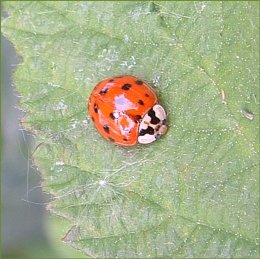
Harlequin Ladybird
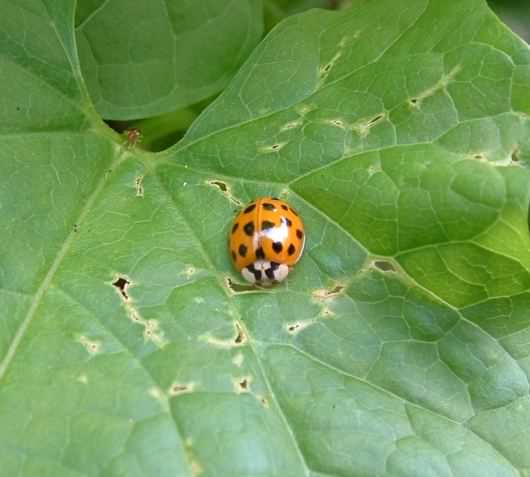
19–spot Harlequin
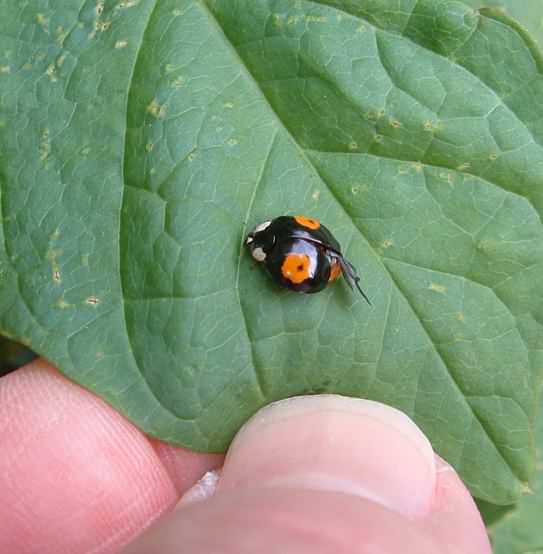
Melanistic 2–spot Harlequin
H. axyridis conspicua
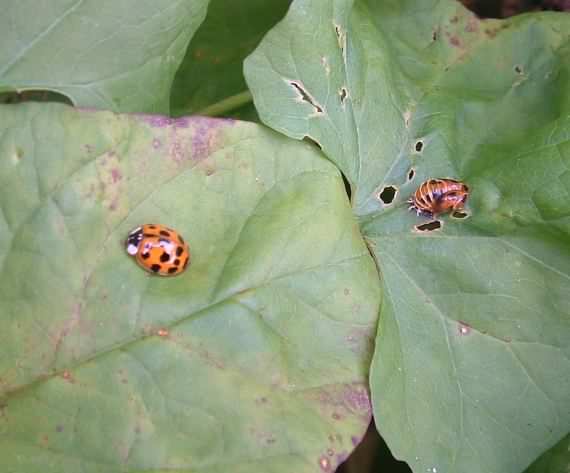
19–spot Harlequin and pupae
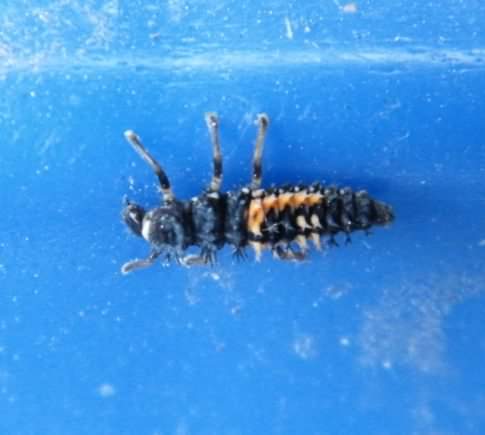
Harlequin larva
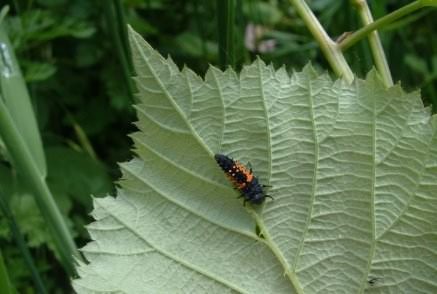
Harlequin larva
Harlequin Ladybird - Harmonia axyridis spp.
Family - Coccinellidae
Also known as - Multicoloured Asian or Halloween ladybird
A non native introduced species about the same size as the common 7–spot ladybird, the Harlequin is 6–8mm (0.25–0.3in) long. It has many and variable spot variations and is sometimes confused with other ladybird species. It can be Red or Orange, have from zero to twenty one spots, it can also be black with two to eight red patches. The pupae which usually are found on the upper surface of leaves are quite distinctive with a fringe of black and white bristles. The larvae grow to 10mm long also have a distinctive patterning of two orange "bands" on segments 3–7 with pairs of orange spots central to the bands on segments 3, 6 and 7, (see photo 5).
In the UK melanistic ladybirds are quite rare so there is a good chance that any found will be Harlequins. The sides of the fore body (pronotum) are mostly white, with a characteristic "M" or "W" shape in black. A voracious eater of smaller insects and aphids it was potentially useful in biological control of pest species, however it out competes other ladybird species whose populations decline by starvation. Once it has cleared the aphid population it starts eating other invertebrates, other ladybird species, Hover flies, Lacewings and Butterflies.
Introduced into the USA about 25 years ago it has established there very rapidly. First found in the UK in September 2004 it has again spread across the Southern UK extremely quickly. These photos of Harlequins were all taken in Brickfields Park and show the quite common Orange 19–spot variant (H. axyridis succinea), and the rarer melanistic 2–spot (H. axyridis conspicua) and another 19–spot having just left its larval case.
For more information about Harlequin Ladybirds see the Harlequin Ladybird Survey
Site design ©1999– Brickfields Country Park - Privacy -